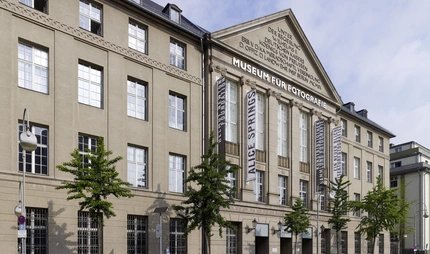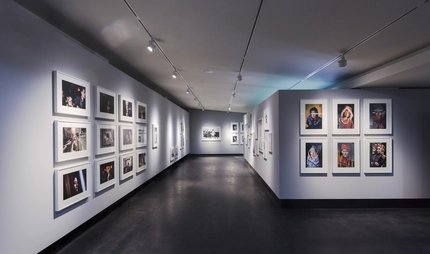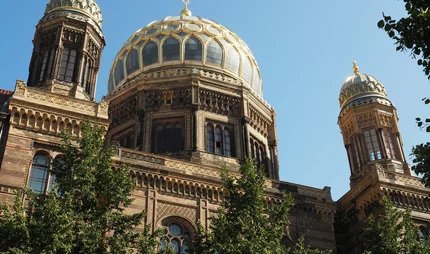
Fotografiska Berlin
Swedish photo museum in Berlin
Fotografiska Berlin opened its doors in September 2023. The Stockholm Museum of Photography moved into a well-known historical building in the heart of Berlin: the former Kunsthaus Tacheles.
May 2010, in the Swedish capital Stockholm: A major exhibition of the works of Annie Leibovitz, world-renowned US photographer, is making news. It is the first appearance of the new Fotografiska, which soon establishes itself through further exhibitions. The opening in Stockholm is followed by openings in New York and Tallinn in 2019. Now Fotografiska presents its fourth branch: Since September 2023, it displays contemporary photographic art in Berlin.
Displaying works – Scrutinising values

Fotografiska is an exhibition house for contemporary art. Accordingly, the focus is on contemporary issues such as ecological, political and social discourses. On display are the photographs of up-and-coming talents, as well as those of renowned artists.
The opening exhibitions give a foretaste of what will be on show in Berlin: Whiteface by Candice Breitz deals intensively with race and ‘white’ perspectives. As a black trans woman, multimedia artist Juliana Huxtable addresses current controversies around queerness, sexuality and ‘disobedience’ in her work Ussyphilia.
Open cultural centre with gastronomy - in the middle of the city

The exhibitions at Fotografiska cover 1,100 square metres. The five-storey historic building on Oranienstraße naturally offers much more space and, with around 5,500 square metres of total area plus a roof terrace, is the ideal place to implement Fotografiska's special concept:
In addition to the exhibition rooms, numerous halls are available for workshops, dialogues with the artists, concerts, public competitions and events of all kinds.
A new lively centre for culture and encounters has been created in the heart of Berlin, crowned - literally - by the rooftop Bar Clara: located in the glass dome of Fotografiska, it offers a magnificent view over the city and is open until late at night.
Historic location
Berliners remember it well:
The monumental five-storey building on Oranienburger Straße, an imperial-era structure from 1908 and once one of the largest shopping arcades in the world, caused a furore after reunification: The dilapidated building had already been largely demolished when the remaining part was occupied by the Tacheles artists' initiative. In the following years, the Tacheles developed into a focal point for controversy and protest actions, for contemporary art, off-theatre and the independent dance scene. After long disputes, the Tacheles was finally vacated in September 2012, and has stood unused ever since. Since 2019, the listed building has been extensively renovated.
More culture in the vicinity

From Oranienburger Straße, it is only a few steps to the important sights of Berlin's historic centre:
The Neue Synagoge is also located on Oranienburger Straße. Cross the picturesque Monbijou Bridge to reach the Bode-Museum, the northernmost of the five world-famous museums on Museum Island, which is a UNESCO World Heritage site. Directly on Museum Island you will also find the Berlin Cathedral and, opposite, the Humboldt Forum, where exciting exhibitions and extensive collections await you at the Asian Art Museum and the Ethnological Museum.
From there you can take the museum line, the U5 underground, to other sights in a quick and barrier-free manner. Or you can stroll down the magnificent boulevard Unter den Linden to the Brandenburg Gate. On your walk, take note of the many monuments - Berlin is also the capital of sculptures!
Your visit
You can reach Fotografiska easily by local public transport: Take the S-Bahn lines S1, S2, S25 or S26 and get off at the Oranienburger Straße S-Bahn station, or take the U6 underground line and get off at the Oranienburger Tor underground station.



